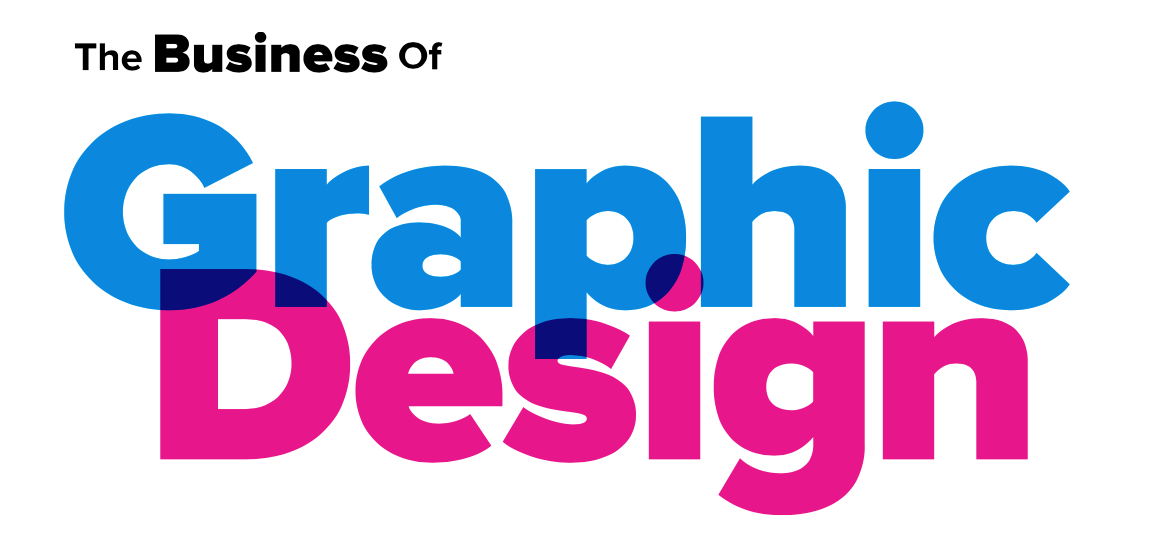
In our opening chapter we cover some basic things needed for anyone to start their own graphic design business as well as some necessary personality traits for those looking to be in business for themselves

In this series, we will break down exactly what it takes to successfully open and operate your own Graphic Design based business. We will also share exclusive interviews with some of the most influential designers of our time. Pentagram designer, Eddie Opara, Joe Duffy, Jay Fletcher, Jill Graves, and Kit Hinrichs, just to name a few. These interviews include insight into how these designers have navigated the industry, overcame challenges and achieved success.
But first things first. It’s important to establish some basics. In order to survive opening your own Graphic Design Business, there are a few things you’ll want to consider before jumping in.
The ABC’s of Getting Started:
Adequate Training and Experience
You need to be a good designer. That takes some education and some time in the field. Check out our comprehensive map of graphic design programs in the United States for a list of institutions around the country where you can gain the skills you will need for the design path you want to pursue.
A Business Plan
Without a plan, there is no vision. Putting a list of goals, needs, and how they work together with a budget is vital to success. We’ll talk more about what makes a good business plan later, but here are some good templates to get you started and help you ask the right questions. We recommend BizPlan.com as a great place to start with professional tools to build your business plan.
Capital and/ or Income
You will need at least one major dependable client and/or enough money to buy some needed equipment, pay bills and stay alive for several months. Having a retainer agreement with a dependable client is a great way to gain some stability for getting started.
4 Trusted Advisors
You will need four dependable and trustworthy professionals: a lawyer, accountant, banker, and insurance agent. Be sure to see our database of professionals for resources in your area.
We will elaborate on these five needs in later posts and share some resources to help you fulfill them.
Below we’ve listed some of what we consider the most important personality characteristics when it comes to operating your own design business. All of the designers we interviewed exhibited these characteristics at different levels. We have found that students who either show or work towards achieving these characteristics, tend to be successful entrepreneurs post-graduation.
7 Required Personality Traits:
You're a Good Communicator
Communication is key when it comes to maintaining working relationships with your clients. You will not only need to be highly responsive in your chosen communication channels, you will also need to be capable of persuading your client that the design that you are suggesting is the best possible choice. If you feel like you aren’t quite there when it comes to persuasion, check out our recommended reading list for some basic persuasion techniques. One of our favorite books on persuasion is “Methods of Persuasion” by Nick Kolenda
Signs that you might be a strong communicator already:
- You are a good listener. It is impossible to communicate properly if you have no idea what your client needs. Listen to and address their points.
- You are able to persuade your friends or peers to have open minds when it comes to your ideas and opinions.
- You enjoy leadership roles and have tended to take them on in school or other organizations.
You Don’t Mind Detail-Oriented Work
Owning and operating a business can be overwhelming. You will need to be able to find the focus to manage the business dealings as well as the creative. While this task may not be your favorite part, it is very necessary. Staying organized will help ease some of the more stressful aspects. If you don’t already have a good planner, check out our reviews and recommendations for Planners for Graphic Designers. Not all planners are created equal. There are a lot of good planners out there but one of our favorite is the Evo Planner with it’s integrated app.
Signs that you will be able to successfully manage the detail work of your business:
- You don’t mind a tedious task every once in a while.
- You are good at paying your bills on time.
- You make lists and mark things off as you accomplish them and seldom forget an appointment.
You Know How to Pivot
Deadlines change. Points of contact change. Technology changes. It’s important that you are able to maintain your core principals while still being flexible when needed. If your biggest client is acquired and your main point of contact is let-go, pivot. Stay grounded by strengthening your relationships with current clients, but allow yourself some flexibility in navigating the issue rather than just considering it a loss. Stay in touch with your point of contact and see if you can work any of your connections to help them find new employment. Taking care of your contacts is not only the right thing to do, but could lead to them bringing you with them to a new company. You want all of your relationships to be mutually beneficial and also flexible.
Signs you’ve already got pivoting down:
- You don’t get discouraged when plans change.
- You are able to easily let a project go or temporarily put it on hold if necessary.
- You aren’t afraid of learning a new technique or process.
You're Not Too Egotistical or Self-Deprecating
Yes, it’s important to have pride in your work, but not to the point of fault. You don’t want to lose clients because you are unwilling to empathize or look past your own opinions.
On the flip-side, don’t beat yourself up if you make a mistake. Own up to it, then fix it. Constructive criticism is a necessary aspect of design and being able to turn it into something useful and productive is a very valuable trait.
Signs you’ve got a good balance of these traits:
- You take constructive criticism with grace and do not consider it personal.
- You aren’t afraid of owning up to an error and doing all that you can to fix it.
You Refuse To Stop Learning
Design itself as well as the design process is constantly evolving. Embrace the technology. While it may be intimidating to learn an entirely new system, it could cost you your career if you refuse to.
Sync up with like-minded people in the design community and ask them what new tech they’re exploring or check out design and technology blogs to get some insight on what you need to stay on top of. Resources like local AIGA chapters are a great way to meet up with and learn from other industry professionals.
Signs you might have the hang of this already:
- You follow industry trends via social media or other outlets.
- You stay in touch with creatives in other fields as well as your own.
- You ask other designers about how they streamline their processes.
You Have Set Goals
Whether you want to run a one-person show or operate a large firm, you will need to have fixed, attainable goals. Beginning this process with no clear goals will hinder, if not halt your progress entirely. Imagine where you’d like to be one year from now and work from there, setting both short-term and long-term goals. We will dig into this and how to set up your basic business plan in later posts.
Signs you’re already a goal-setter:
- You know what you’d like to be doing a year from now.
- You take things step by step and don’t get overwhelmed by the end goal.
You’re willing to put in the necessary work and then some
When you go into business for yourself, you have to quickly learn to depend on only yourself. As you grow, you will be able to delegate to trusted employees, but ultimately the responsibility of meeting deadlines will still fall on you. This requires working a lot of late nights and pushing through a whole lot of burnout. We’ll talk through some tips on pushing past burnout in later posts
Signs you can work, work, and work some more:
- You have a long track record of following through on projects.
- You are ok with taking leadership roles in groups where you will be the one to take the fall if the project isn’t completed.
Chapter 1 Conclusion
If you’re feeling overwhelmed after reading these words or you’re concerned that you don’t perfectly embody every characteristic, don’t worry about it. No one person is the perfect combination of these traits and the designers we interviewed did not start out mastering every single one. They worked to hone their strengths and improve upon their weaknesses as they progressed through their careers.
You do not need to have every one of these mastered in order to start a graphic design business, but you do need to be aware of them and willing to improve upon any that you haven’t quite mastered. Don’t discount the process and the steps that it takes to make the perfect design. Design is all about process and so is The Business of Graphic Design.



